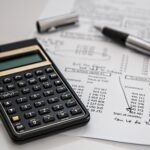Though somewhat below first estimates of 3.1%, Japan’s economy has shown indications of growth, achieving an annual rate of 2.9% for the April-June period. Rising earnings and more consumer spending help explain this development, but underlying all of this optimism are major hazards that can compromise ongoing improvement.
Among them, the most urgent issues are the possible effects of U.S. economic swings and the present political instability in Japan, especially with the forthcoming change of leadership in the ruling Liberal Democratic Party (LDP).
Economic Growth: A Closer Look
With Japan’s economy expanding by 0.7% in the fiscal first quarter, the most current statistics shows a recovery from a decline earlier in the year. This is a change from a concerning 0.6% drop in the quarter before. Especially, the seasonally adjusted real GDP shows a strong trend, which shows the strength of domestic demand since it jumped by 3.0%. Strong household consumption and private sector investments together with government spending help to explain this rise.
Notable is its export performance, with a 6.1% growth rate above earlier projections. Given a country mostly dependent on exports—especially in the technology and automotive industries—such numbers at first look encouraging. Dependency on outside markets, particularly the U.S., nonetheless creates weaknesses.
Any slowing down in American economic development could have instantaneous and significant effects on Japan’s economy, therefore stressing a delicate interdependence that calls for careful handling.
Political Uncertainty: Their Function
Japan’s political scene is changing right now as the LDP is ready to choose a new leader. The tenure of Prime Minister Fumio Kishida has been beset with difficulties; as approximately a dozen candidates fight for his post, there is great likelihood of policy changes. Given that the ruling party controls parliament, the new leader is expected to be the next prime minister, hence the forthcoming vote on September 27 is especially important for the course of Japan.
Economic confidence depends absolutely on political stability. Both consumers and investors are sensitive to changes in government, hence the uncertainty about the LDP leadership contest can discourage spending and investment.
Changing leadership could also affect fiscal policy, therefore influencing government expenditure and economic agendas. Therefore, even if the GDP numbers show development, the fundamental political dynamics could greatly affect the sustainability of this momentum.
Long-term Economic Challenges
Beyond current political uncertainties, Japan’s economy has more general long-term problems. If present trends continue, the International Monetary Fund (IMF) projects that Japan might slide to the fifth-largest economy in the world behind the U.S., China, Germany, and India. This estimate draws attention to a serious issue: the slowdown of economic development in a country usually famed for its industrial strength and creativity.
One of the main causes of this stagnation is demographic ones. Declining birthrates and aging population of Japan provide great difficulties for economic vitality. Further aggravating economic constraints is a declining workforce leading to lower consumer spending and decreased productivity.
Japan needs policies encouraging immigration, workforce engagement among women and the elderly, and technological innovation to boost output in order to offset these demographic trends.
Balancing Domestic and Global Factors
For Japan’s economic plan, the interaction between home demand and world economic situation is absolutely vital. Although domestic consumption has showed resilience, depending on exports means that international economic situation has to be continuously watched. One of the main trade partners, the United States’ economy is quite important. Should the United States go into a recession or see notable slowdowns in growth, Japan’s export-driven industries may suffer, therefore affecting general economic performance.
Moreover, outside elements such geopolitical concerns and supply chain interruptions—especially in the Asia-Pacific area—may complicate Japan’s economic environment. Japan’s economy depends on maintaining strong trade relationships while negotiating these challenges if it is to flourish in a competitive worldwide market.
Finally, a cautious perspective
In essence, even if Japan’s economy shows indications of resilience—especially in relation to domestic demand and export growth—the path ahead is clearly unpredictable. Policymakers have to delicately balance political changes, demographic pressures, and global economic dependencies. Emphasizing the importance of stability and cohesive tactics to negotiate both local and international pressures, the forthcoming LDP leadership election can set the tone for next economic measures.
Japan’s economy’s future depends on its capacity to adjust to these several difficulties at last. Japan may pursue not only recovery but also sustainable development by encouraging invention, welcoming demographic changes, and keeping a sharp awareness of worldwide economic changes. The decisions taken in the political sphere will be crucial in determining the economic scene for years to come as the country finds itself at a turning point.
Also read:
Avatar: Pioneering the Future of Hybrid Filmmaking and Financial Success






